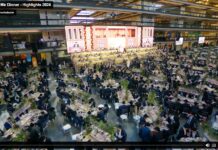 Yahrtzeits – 12 Cheshvan
Yahrtzeits – 12 Cheshvan
Rav Yehuda Tzadka, rosh yeshiva of Porat Yosef (1909-1991). Born in Yerushalayim, Rav Yehuda was a great-great grandson of Rav Tzadka Chutzin, author of Tzedaka U’misphat. His mother, Simcha, was the Ben Ish Chai’s niece. The Tzadka family lived in the Beis Yisrael neighborhood of Yerushalayim. When he was 12 years old, Yehuda Tzadka enrolled in the Porat Yosef Yeshiva in the Old City. There, he became very close to Rav Ezra Attia. At the age of only 27 years, he was appointed to teach at the yeshiva. Among Reb Yehuda’s first students was Rav Ovadia Yosef. In time, Rav Yehuda became the menahel ruchani, and with the petira of Rav Ezra Attias in 1970, he was appointed to new Rosh Yeshiva.
Rav Nachum Levi of Shadik, Yerushalayim (1865). He died in the cholera plague of 1865, which took hundreds of lives. He was the father of the Baharan family that built Meah Shearim, including Rav Dovid Baharan and Rav Shlomo Zalman Baharan. The Yeshivos HaRan network of 18 yeshivos and kollelim is named for him and is headed by his great-grandson, Rav Tzvi Weissfish.
Rav Moshe Kramer, Av Beis Din in Vilna. His surname, “Kramer” is derived from the Yiddish word for storekeeper. He owned a store, which his wife ran. And as a result, he always insisted on no being paid for his rabbanus (1648)
Yahrtzeits – 13 Cheshvan
Rav Yehuda Hachassid, author of Sefer Hachassidim (1150-1217). He was born in Speyer (Shapira) and died in Regensburg. His father, Shmuel, was a saintly and renowned Rosh Yeshiva in Speyer, and Rav Yehudah studied under him. He also wrote Sefer Gimatriot and was one of the main teachers of the ‘Chassidei Ashkenaz’. Among his talmidim were the Or Zarua and the Semag.
Rav Tzvi Shraga Grossbard (1916-1993) was born in Visan, Lithuania. His father, Rav Aharon Zev, was an outstanding talmid of the Chafetz Chaim. When Tzvi Shraga was still a youngster, his father was brutally beaten to death by Lithuanian thugs because he refused to inform on a fellow Jew. At the age of nine Tzvi Shraga joined Yeshivas Sha’arei Torah in Grodna. At age 14, Rav Tzvi Shraga entered Grodna’s yeshiva gedola and formed a close bond with the famed Rav Shimon Shkop. Afterwards, he became one of Rav Baruch Ber Lebowitz’s select students in Yeshivas Kaminetz, and at the beginning of the Second World War he studied for a year and a half under Rav Daniel Movshovitz in Yeshivas Kelm. In 1941, Rav Tzvi Shraga left Europe for Eretz Yisrael. There, he joined the Lomza yeshiva in Petach Tikvah headed by his uncle, Rav Abba Grossbard. Rav Tzvi Shraga also became the head of Tel Aviv’s beis mussar and developed a strong friendship with mussar giant, Rav Eliyahu Dessler who was then spiritual mashgiach of the Ponovezh Yeshiva. The two men studied b’chavrusa each week in Rav Tzvi Shraga’s home. In 1967 Rav Tzvi Shraga Grossbard became the director of Chinuch Atzmai and he remained at its helm for 25 years.
Rav Baruch of Kosov (1782). Disciple of the Maggid of Mezritch and of Rav Menachem Mendel of Vitebsk; author of Yesod HaEmunah and Amud HaAvoda.
Rav Haim Nahum Effendi (1872-1960). Served as Sephardic Chief Rabbi of Egypt (1925-1960). He was witness both to a vibrant community of 80,000 Jews living in Egypt and also to the community’s disintegration after 1948 when government hostility, violence, economic restrictions, confiscation and deportation caused most Jews to leave. Born near Izmir in Turkey, he was sent by his parents to learn in a yeshiva in Tiveriya and later went to a French Lycee for his secondary education, obtaining a degree in Muslim law in Constantinople. He also attended the Sorbonne’s School of Oriental Languages, where he perfected his linguistic abilities and also studied history and philosophy. In 1923, Rabbi Nahum received an invitation from Moise Cattaoui Pacha, head of the Jewish community in Cairo, to become the Chief Rabbi of Egypt and was appointed to serve as a Senator in the nation’s Legislative Assembly.
Today in History – 12 Cheshvan
· Rindfleisch massacres claim over two thousand Jewish lives in South Germany – 470 in Rothenberg ob der Tauber, over 700 in Nuremberg, and over 800 in Wurzburg. Among the Jews murdered were Rav Yechiel ben Menachem HaKohen and Mordechai ben Hillel in Nuremberg.
· The last public Auto da Fe is held in Portugal, 1765. The ceremony, accompanied by vitriolic sermons, announces the punishments of those Christians, and Jewish converts to Christianity, who were accused of backsliding. Many victims are subsequently burned at the stake.
· Father Charles Coughlin, a Roman Catholic priest in Detroit, begins his weekly anti-Semitic broadcasts over national radio, 1938. He also formed the Christian Front in New York City which carried out anti-Semitic street meetings and boycotted Jewish businesses.
· The UN declares that “Zionism is Racism”, 1975.
· Prime Minister Yitzchak Rabin assassinated at peace rally, 1995.
Today in History – 13 Cheshvan
· Jews of England imprisoned by King John, 1210.
· Many copies of Talmud publically burned in Venice under the order of Cardinal Peter Caraffa, the future Pope Paul IV. Pope Julius III approved the action, 1553.
· First Siddur printed in America, 1760.
· Nazis prohibit Shechita in Poland on “humanitarian” grounds, 1939.
· German planes destroy most of the English town of Coventry, 1940.
· Anne Frank deported from Auschwitz to Bergen Belsen, where she died 5 months later, 1944.
{Anshe.org/Matzav.com Newscenter}











